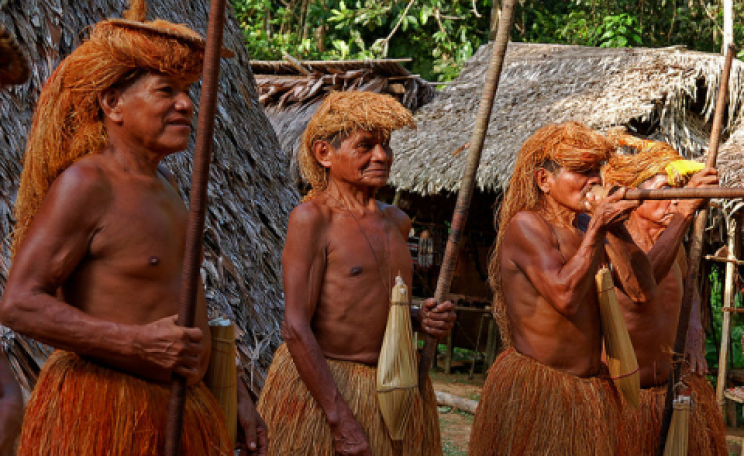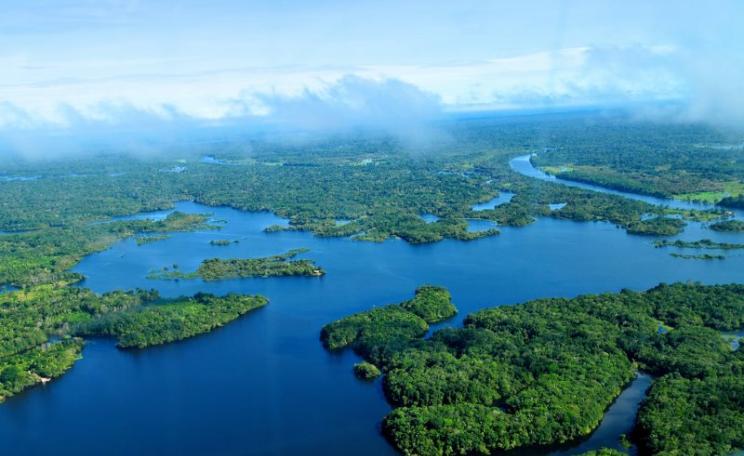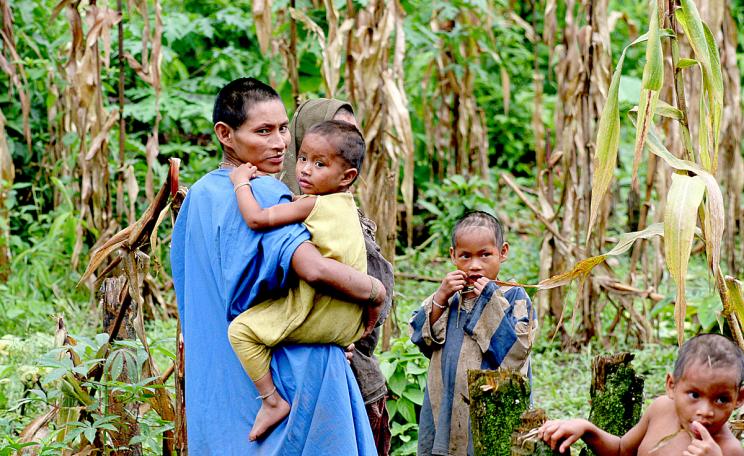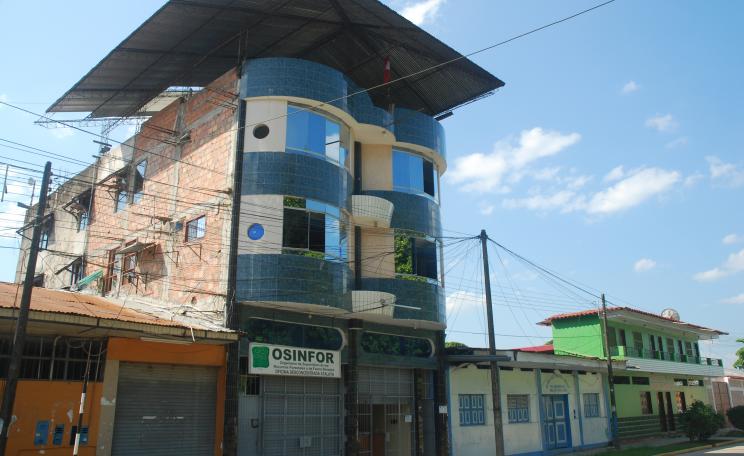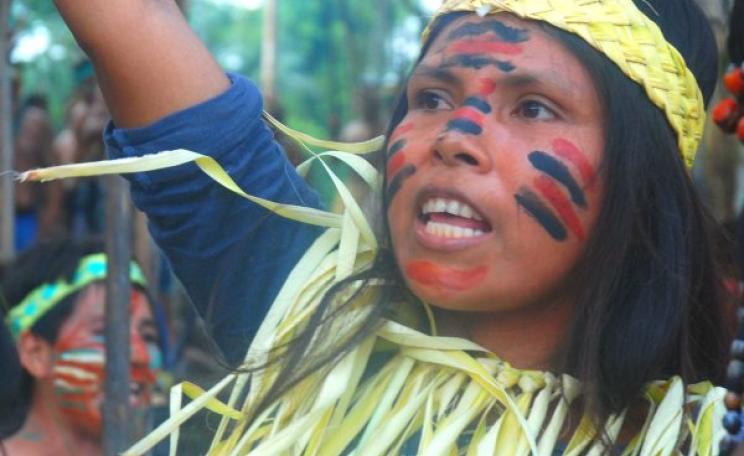Epidemics of infectious and exogenous viral diseases, such as acute diarrhea or acute respiratory infections, can cause 'prolonged periods of illness, massive deaths ... '
Pluspetrol also acknowledges that contact between its workers and indigenous peoples in 'voluntary isolation' and 'initial contact' (IPVIIC) is "probable" during its planned gas exploration and construction operations in the Amazon.
The startling admissions come in Pluspetrol's Environmental Impact Assessment (EIA), which is currently pending the approval of Peru's government.
Almost three quarters of the area of Pluspetrol's Lot 88 concession lies within the Kugapakori-Nahua-Nanti Territorial Reserve, which was established in 1990 to protect the 'IPVIIC' communities.
Workers will be encouraged to interact
The company is even planning to tell its workers to interact with the highly vulnerable 'IPVIIC' indigenous people, greatly increasing the risk of disease transmission.
Under what claims to be an "Anthropological Contingency Plan", workers should smile and make friendly gestures if contact is established, engage in conversation, offer material objects and hospitality, and take photographs - as long as no flash is used.
Pluspetrol's EIA - written by the company together with consultancy Environmental Resources Management (ERM) - considers the impacts of the company's plans to expand the Camisea gas project in Peru's Cusco region, already the country's largest energy development.
Lack of immunological defenses
According to the EIA's chapter 4: "Indigenous peoples in isolation or initial contact are highly sensitive to outside diseases due to their lack of immunological defenses to combat them.
"Epidemics of infectious and exogenous viral diseases, such as acute diarrhea or acute respiratory infections, can cause [quoting a Peruvian anthropologist] 'prolonged periods of illness, massive deaths and, in the best cases, long processes of convalescence.' "
Yet the EIA states numerous times that the planned expansion would take place in areas used by IPVIIC. Chapter 6 - recently removed from public view on Peru's Energy Ministry's website - states that "during the 2D and 3D seismic tests, drilling, and laying of the pipeline, workers may meet indigenous peoples in isolation and / or initial contact."
It also describes contact as a "probable emergency" and raises the "possibility of an attack". This could explain the instructions to gas workers in the 'Anthropological Contingency Plan' to establish friendly relations with any indigenous people they might encounter - never mind how lethal those contacts might prove if disease is transmitted.
30% to 50% of indigenous populations already wiped out by disease
Pluspetrol's EIA also acknowledges that two indigenous peoples in the Camisea region have already been more than decimated following first sustained contact - "about 40% of the Nahua" and "between 30% and 50%" of the Nanti died from introduced diseases.
Epidemics of infectious and exogenous viral diseases, such as acute diarrhea or acute respiratory infections, can cause 'prolonged periods of illness, massive deaths ... '
And it lists many other serious ways in which the reserve's indigenous inhabitants will or could be affected by the expansion. These include being barred from key resources, being forced to spend longer than usual hunting, and having less to eat. At one point the EIA states:
"Given the impossibility of establishing direct contact with the populations in isolation in the Kugapakori-Nahua-Nanti Reserve it is difficult to understand the magnitude of the effects that the project could have on them.
"In terms of evaluating the impacts [of the project], it is assumed that any activity different to that in their daily lives will generate fear, concern and changes in the ways they see and conceive of the world."
Although it isn't surprising that Pluspetrol acknowledges that the IPVIIC are extremely vulnerable, the fact that it admits contact is "probable" as well as encouraging interaction with them is remarkable.
In recent years, companies operating elsewhere in Peru where there are IPVIIC have tended to adopt different strategies - for example, claiming that no such people exist.
Awaiting Government approval
Pluspetrol's EIA is currently pending approval by Peru's Vice-Ministry of Inter-Culturality (VMI), situated within the Ministry of Culture (MINCU) - which has come under strong legal and political pressure to expedite the Camisea expansion.
A highly critical report by the VMI last July stating that the expansion could "devastate" the Nahua and make "extinct" the Kirineri and Nanti was removed from the public sphere and later rescinded.
MINCU, following the resignation of key personnel, subsequently hired a "special team" from outside the ministry to write another report which was much less critical. It was made public last November.
The VMI's July report had been particularly critical of Pluspetrol's 'Anthropological Contingency Plan' (ACP), making a series of 20 points that the company needed to address.
It also stated that Pluspetrol misunderstood the aims of having such a plan and its current version ignored recommendations made by Peru's Health Ministry to safeguard the IPVIIC's health.
By contrast, the VMI's November report made only one brief mention of the ACP, requesting that the company explain how it would be implemented if "some inhabitant of the reserve turned up" at one of its installations.
Violating Peruvian law
The Peruvian NGO Derechos, Ambiente y Recursos Naturales (DAR), which campaigns on environment, resources and indigenous peoples, is particularly concerned about the potential impacts of the planned expansion on the IPVIIC's health.
DAR alleges that the VMI has been using out-of-date information in its evaluations of Pluspetrol's EIA, and that the government is violating Peruvian law by failing to devise a plan to protect the reserve in which the IPVIIC live and appoint a management committee to implement it. According to a DAR press release dated 15 January:
"The Health Ministry is about to complete a new Analysis on the Health Situation of the Kugapakori-Nahua-Nanti Reserve. This report must be waited for so that its conclusions and recommendations can be considered as part of the evaluation of the EIA, given that the main impact of the project will be on [the IPVIIC's] health."
DAR, together with Peru's National Coordinator for Human Rights and indigenous organizations AIDESEP and FENAMAD, highlighted the threats posed by the Camisea expansion at a hearing about IPVIIC held at the Inter-American Commission on Human Rights in Washington last November.
Pluspetrol's Lot 88 concession occupies almost a quarter of the Kugapakori-Nahua-Nanti Territorial Reserve. Almost all of the planned expansion - 18 wells at six different locations, 2D and 3D seismic tests, and the construction of a 10.5 km pipeline - would take place in the reserve
Dangerous policy contradictions
Rebecca Spooner, from the London-based NGO Survival International, says that the government's position is "dangerously contradictory", creating a reserve yet "on the brink of granting access to hundreds of gas workers with heavy machinery to detonate explosives."
"Pluspetrol and the State have admitted the massive danger their work could pose for the Indians' lives, but they are carrying on anyway, blinded by the pursuit of unrenewable energy that will be of no benefit to the people whose land it lies under", says Spooner.
Thomas Moore, an American anthropologist affiliated to the NGO Centro Eori in Peru's Madre de Dios region who has worked with indigenous peoples in the Peruvian Amazon for 40 years, says:
"The current government will do nothing to protect indigenous peoples where oil and gas development are possible. The next step after expanding Pluspetrol's operations in the Kugapakori-Nahua-Nanti Reserve may well be to allow oil and gas exploration in the Manu National Park, also the home of IPVIICs, that borders the Reserve."
Semantics
Asked about the possibility of "massive deaths" highlighted in Pluspetrol's EIA, and how the Camisea expansion could be justified, Peru's Vice-Minister of Inter-Culturality, Patricia Balbuena Palacios ignored the issue. Instead she stated in an email:
"The quotation from the EIA must be more appropriate and rigorous like in a piece of research, given that it is a quotation of one text in another text."
Pluspetrol is the operator of Lot 88, but leads a consortium of companies including Hunt Oil, Repsol and SK Corporation. Neither Pluspetrol nor ERM could be reached for comment.
Also in The Ecologist: "Peru - gas expansion in Amazon 'indigenous reserve'.
Twitter handle: @DavidHillTweets


